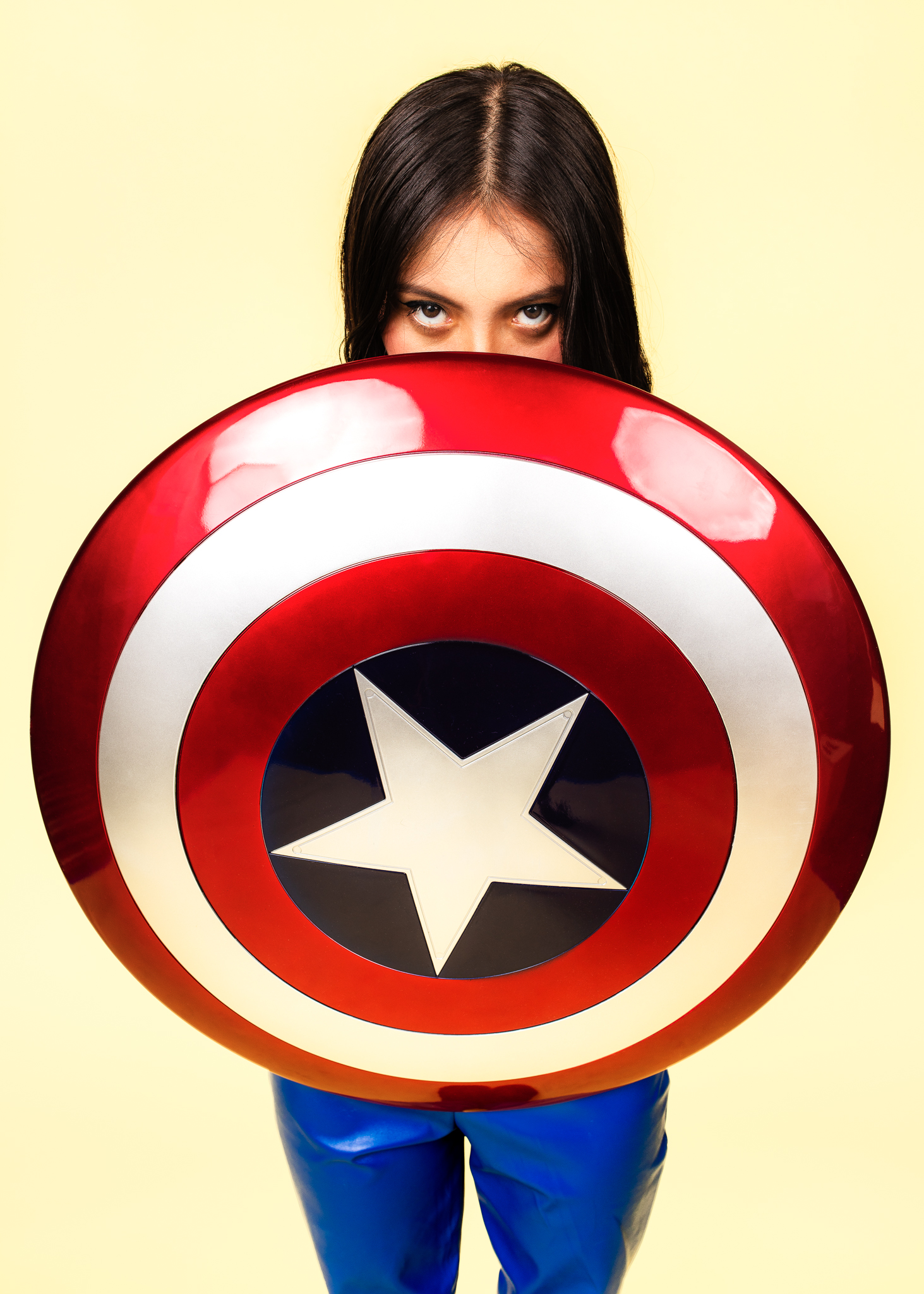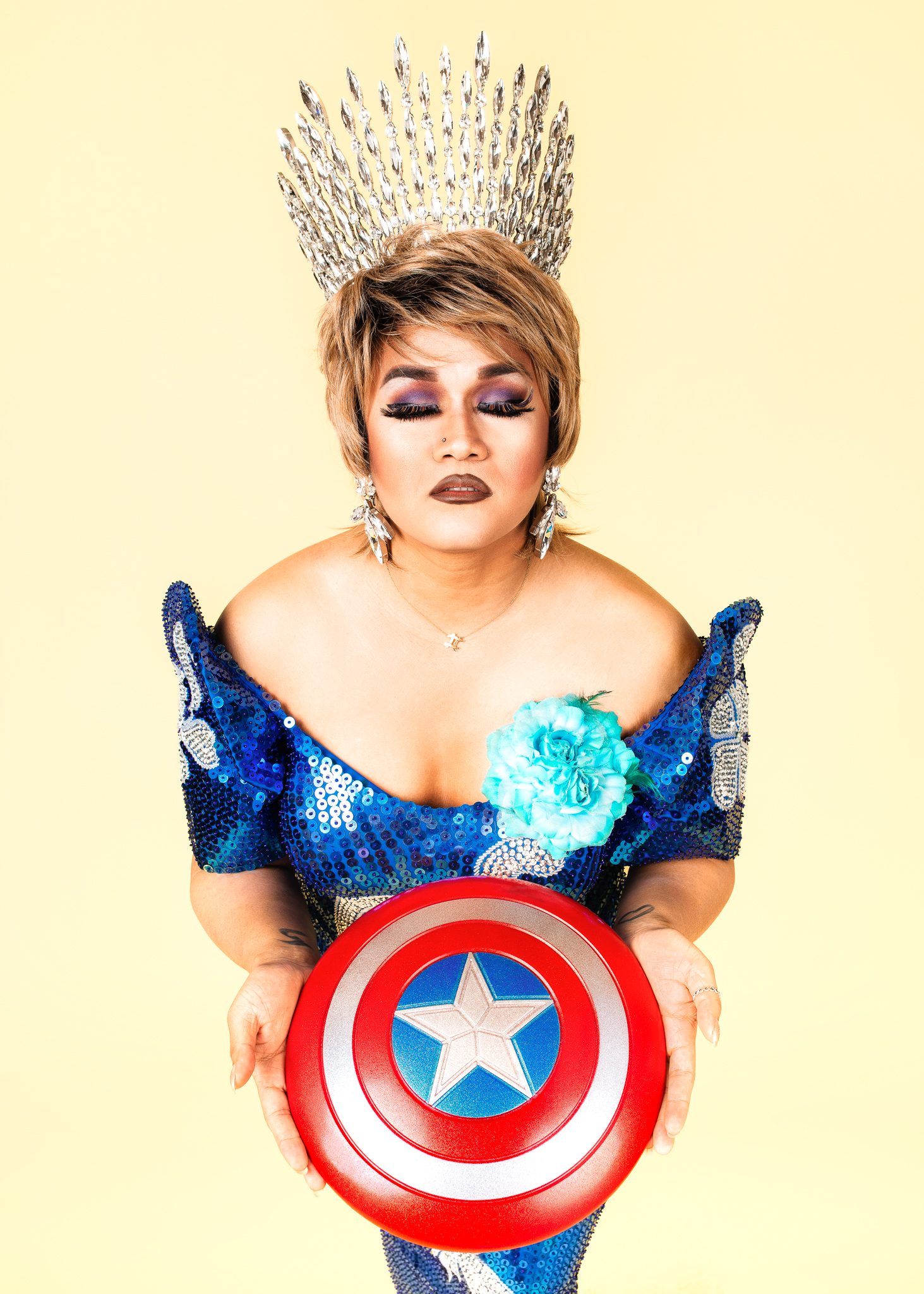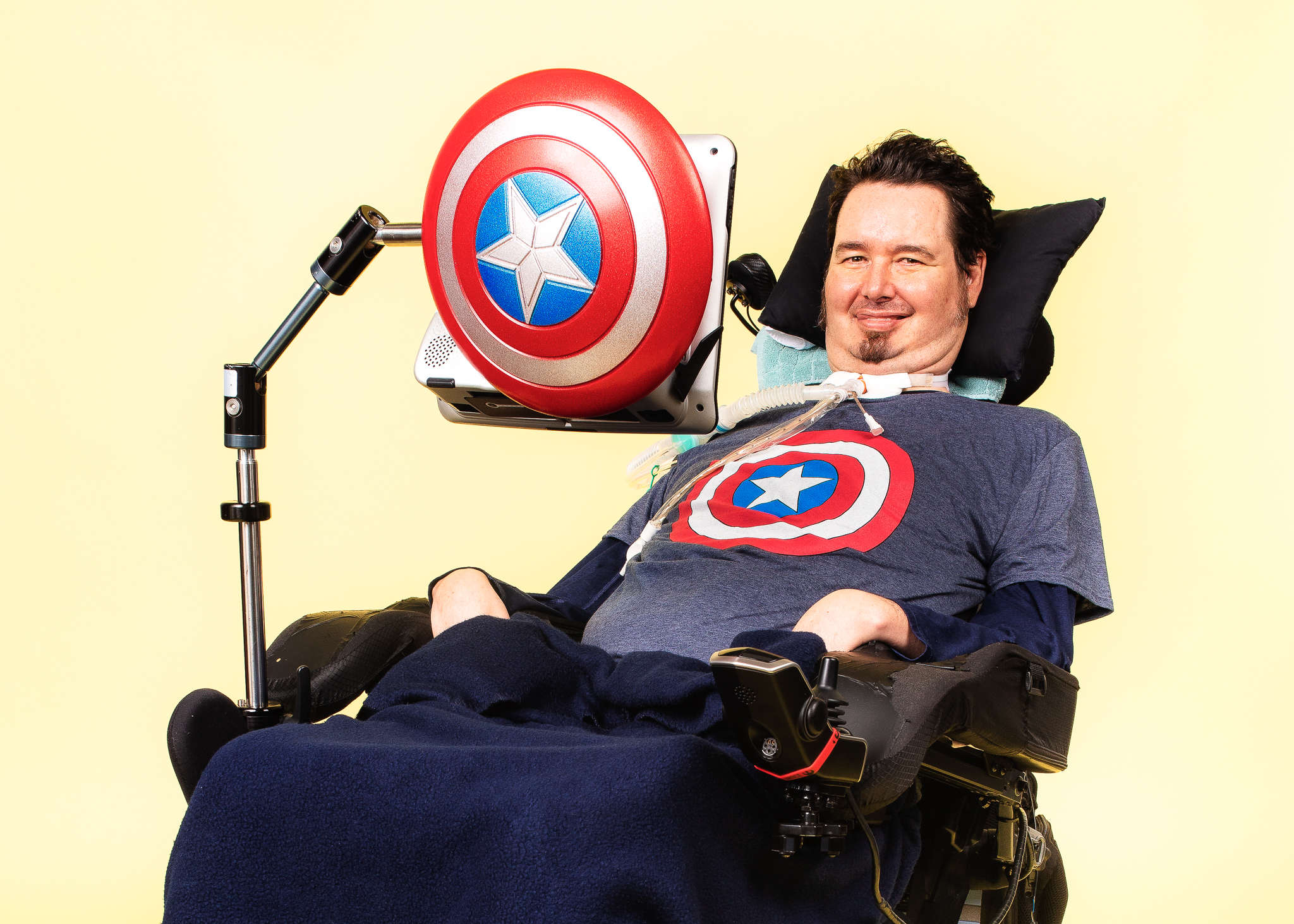-

Giselle Lopez is a marketing student and aspiring filmmaker. Her mother was deported early last year. She often goes to Mexican restaurants because it helps keep her mother’s memory close. (Photo by Nate Gowdy.)
In a new photo exhibit at UW Tower, dozens of people of all ages, backgrounds and walks of life don shields, masks, belts and at least one tiara — brought to life as modern-day American superheroes in red, white and blue.
“An American Superhero,” a collaboration between Vishavjit Singh, also known as Sikh Captain America, local photographer Nate Gowdy and others, depicts 35 individuals as Captain America, alongside the individuals’ own candid reflections about their identities and what they consider to be their superpowers.
Many of the project’s participants are people of color, immigrants, LGBTQ+, or span various age groups and experiences have been excluded from the narrow definition of what it means to be American. Participants include Singh himself, Congresswoman Pramila Jayapal, local activist and drag personality Aleksa Manila, and dozens of others from all age ranges, occupations, backgrounds and personalities.
Christie Skoorsmith, who produced the project with Gregory L. Evans, planted the seeds for the project last fall, when Singh spoke at Town Hall Seattle about his Sikh Captain America cartoons and persona, and how he used cartooning and humor to combat stereotypes and create connection in a divided world, something he started doing after he was racially targeted for sporting a turban and beard following 9/11.
Singh uses the idea of superheroes to tease out important conversations about identity, connection, and peace.
Singh’s approach touched Skoorsmith deeply. Her 8-year-old sons are transgender and love to use pictures and cartoons as a mode of self-expression.
Cartooning was one of the first ways her children expressed their thoughts on gender, Skoorsmith said.

The twins had transitioned publicly in August of 2018. Skoorsmith had been thinking of the challenges that came along with transitioning, especially in a hostile political climate. Inspired, Skoorsmith got up and asked Singh whether he’d ever considered having other people take photos dressed as Captain America.
After the talk, Singh conceptualized the idea of getting each participant to don a superhero costume that spoke to their identity and story. Singh also conducted the companion interviews that accompany each photograph.
Local photographer Gowdy also happened to be in the audience that night, and offered his services. The costumes also come from Gowdy — who reached his maximum credit limit by purchasing Captain America paraphernalia.
The team reached out to friends and acquaintances to be models, making sure to reach out to people with an array of identities and stories representative of the multitude of American experiences.
Skoorsmith said that when people came in for the photo shoot, they ended up staying longer than the shifts they had signed up for. They listened to one another’s stories of what it means to walk the world with their own experiences and what personal qualities they considered their superpowers.
“What happened was the actual experience of doing the photo shoot has become so meaningful to the participants,” Skoorsmith said. “We got all this feedback from participants, people said it felt so amazing, they felt so heard.”
Skoorsmith said an organic theme emerged: immigration and the immigrant experience.
Now, the team is being asked the replicate the project with other themes. The first iteration of this project was based in Seattle, but Skoorsmith, Singh and Gowdy say they want to take the project on the road to cities across America.
“What happens when we go to Alabama, or North Dakota? We are all pretty left and progressive [in Seattle], what happens when there are other parts of the American story too that are hard for me to hear?” Skoormsith said. She especially wants to see how geography will change the stories people tell about themselves and their personal superpowers.
Skoormsith says the urgency of doing a project like this goes back to her boys, and the powerful impact the superhero framing can have.
“They have this amazing strength and ability and insight into who they are, and they’ve been facing it since the age of three and a half so for five years they have been this amazing light and superhero in my life,” she said.




Go see it
“An American Superhero” is now exhibiting at the UW Tower’s Mezzanine Lounge. To see more photographs and read about the participants, visit: http://www.nategowdy.com/

